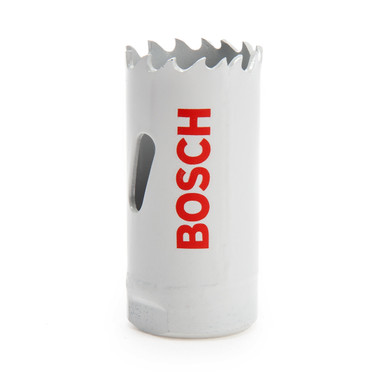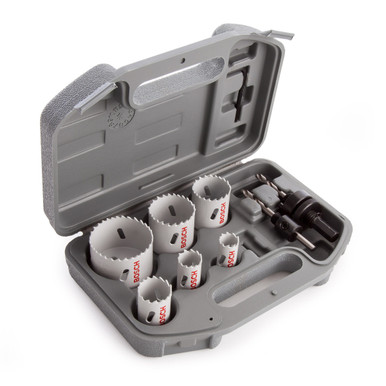Hole Saws: A Guide to Choosing and Using
Posted by Katy | Toolstop on 5th Aug 2024
In our complete guide to hole saws, we explain exactly what they're used for, how to use one and which one to use and when.
What is a Hole Saw?
A hole saw is a circular saw blade with teeth on its outer edge. Mounted on an arbor - a rod that fits into a drill chuck - the hole saw rotates when the drill is turned on, cutting through the material. Unlike standard drill bits, hole saws can create larger diameter holes without removing the core material, making them efficient and powerful.
Types of Hole Saws
Bi-Metal Hole Saws:
- Composition: Made from a combination of steel and high-speed steel
- Advantages: Less expensive, suitable for softer materials like wood and plastic
- Disadvantages: Not as durable as tungsten carbide hole saws
Tungsten Carbide Hole Saws
- Composition: Made from a single piece of tungsten carbide
- Advantages: Extremely durable, capable of cutting through harder materials like metal and masonry
- Disadvantages: More expensive than bi-metal hole saws
Parts of a Hole Saw
A hole saw consists of several key components:
- Cutting Teeth: The edges of the hole saw that perform the cutting. These can have a variable or constant tooth pitch
- Slots: Allow chips and dust to escape during cutting
- Pilot Drill and Arbor: Helps in positioning and stabilising the hole saw during operation
Tooth Pitch
- Variable Pitch: Provides a smoother cut with reduced wear on the blade
- Constant Pitch: Slower but produces a finer cut
Teeth Per Inch (TPI):
- Low TPI (1-4 TPI): Faster cuts but rougher finish
- High TPI (10+ TPI): Slower cuts but smoother finish
How to Choose a Hole Saw
When selecting a hole saw, consider the following factors:
- Material: Choose a hole saw suitable for the material you're cutting. Bi-metal for wood and plastic, tungsten carbide for metal
- Size: Select the diameter that matches the hole size you need
- Number of Teeth: More teeth provide a smoother cut; fewer teeth offer a faster cut
How to Use a Hole Saw
Hole saws are used for various applications, such as installing drainage pipes and making holes for pipework and wiring. Here's a step-by-step guide on how to use a hole saw:
- Insert the Arbor: Insert the arbor via the back of the hole saw
- Attach the Hole Saw: Screw the hole saw onto the arbor's thread until it is secure
- Secure the Arbor: Insert the arbor into the drill chuck and tighten it
- Pilot Hole (Optional): If your arbor doesn't come with a pilot drill bit, you can drill a pilot hole to guide your hole saw
- Position the Hole Saw: Align the hole saw with the desired cutting location
- Start Drilling: Begin drilling slowly, gradually increasing the speed
- Clear Dust: Occasionally back the hole saw out of the hole to clear dust and debris
- Remove Waste Material: After drilling the hole, remove the waste material from the hole saw
Hole saws are essential tools for creating clean, accurate holes in various materials. By understanding the different types of hole saws, their components, and how to use them, you can achieve professional results in your projects. For a wide selection of hole saws, visit our hole saws category page.









